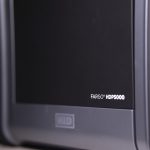Segoe UI Fluent Icons are a crucial part of the modern Windows interface, delivering the clean and dynamic look of system icons in Start menus, taskbars, and settings panels. If these icons become corrupted, it can severely affect the visual consistency and usability of your operating system. Corrupted Segoe UI Fluent Icons often appear as missing symbols, scrambled characters, or blank boxes. Fortunately, there are tried-and-tested methods that can be used to restore these essential system assets.
Understanding the Issue
The Segoe UI Fluent Icons font is a system font in Windows, typically located in the C:\Windows\Fonts directory. It contains glyphs—vector-based icons—that applications and system UI components use instead of image files. Corruption in this file can occur due to incomplete updates, third-party theming tools, or erroneous registry modifications.
[ai-img]segoe ui, fluent icons, windows font issue[/ai-img]
Methods to Fix Corrupted Segoe UI Fluent Icons
1. Reinstall the Segoe UI Fluent Icons Font
One of the most effective solutions is to manually reinstall the corrupted font file. Follow these steps:
- Open the Fonts folder by typing shell:fonts into the Run dialog (Win + R).
- Locate and remove the Segoe Fluent Icons entry if it’s corrupted.
- Download a clean version of the Segoe Fluent Icons font from a reliable Windows installation or Microsoft’s official resources.
- Right-click the downloaded font and select Install for all users.
Note: Ensure that the file is digitally signed and from a trustworthy source to avoid malware or further corruption.
2. Use System File Checker and DISM Tools
Windows has built-in tools that can detect and repair corrupt system files, including fonts. Here’s how to use them:
- Right-click on the Start menu and select Windows Terminal (Admin) or Command Prompt (Admin).
- Enter the following command to scan for corrupted files:
sfc /scannow - Once finished, if any issues persist, run the DISM tool with:
DISM /Online /Cleanup-Image /RestoreHealth - Restart your system once the scans complete.
These tools will attempt to repair any corrupted system components using cached or online resources. This method is particularly useful if you’re experiencing broader system instability alongside the font issue.
3. Reset Font Settings to Default
If the Segoe UI Fluent Icons font has been accidentally replaced or tampered with by a customization utility, resetting fonts to Windows defaults may resolve the issue.
- Open Control Panel and go to Appearance and Personalization > Fonts.
- On the sidebar, click Font settings.
- Click the Restore default font settings button.
After rebooting, Windows should attempt to restore any modified or missing font files with its default versions.
4. Apply Windows Updates
Many font-related issues are resolved through cumulative updates provided by Microsoft. Always ensure your system is fully up to date:
- Go to Settings > Windows Update.
- Click Check for updates and install any pending items.
Reboot your device afterward to ensure all changes take effect.
[ai-img]windows update, fix system issues, font repair[/ai-img]
Preventing Future Corruption
To reduce the chances of this issue occurring again, follow these best practices:
- Refrain from using unauthorized themes or font packs that may overwrite system fonts.
- Maintain regular backups of your system, particularly before major updates.
- Use reliable antivirus software to guard against malware that could affect system files.
When to Consider a System Restore
If none of the above methods resolve the issue and the problem started recently, it might be worth performing a System Restore:
- Search for System Restore in the Start menu and launch Create a Restore Point.
- Click the System Restore button.
- Choose a restore point that predates the font problems and follow the on-screen instructions.
This allows you to roll back critical system files, including fonts and configuration databases, to a working state.
Conclusion
Segoe UI Fluent Icons are essential to the performance and aesthetics of modern Windows installations. When they become corrupted, the user experience can deteriorate significantly. By using font reinstallation, built-in diagnostic tools, and update mechanisms, most users can resolve the issue without performing a complete system reinstall. Follow the steps carefully, and always ensure your actions are aligned with maintaining system integrity.







